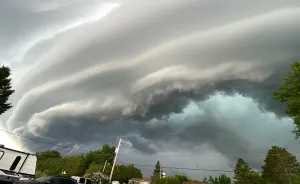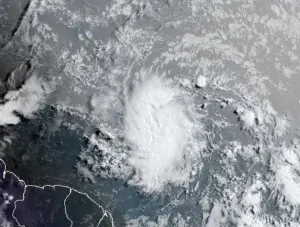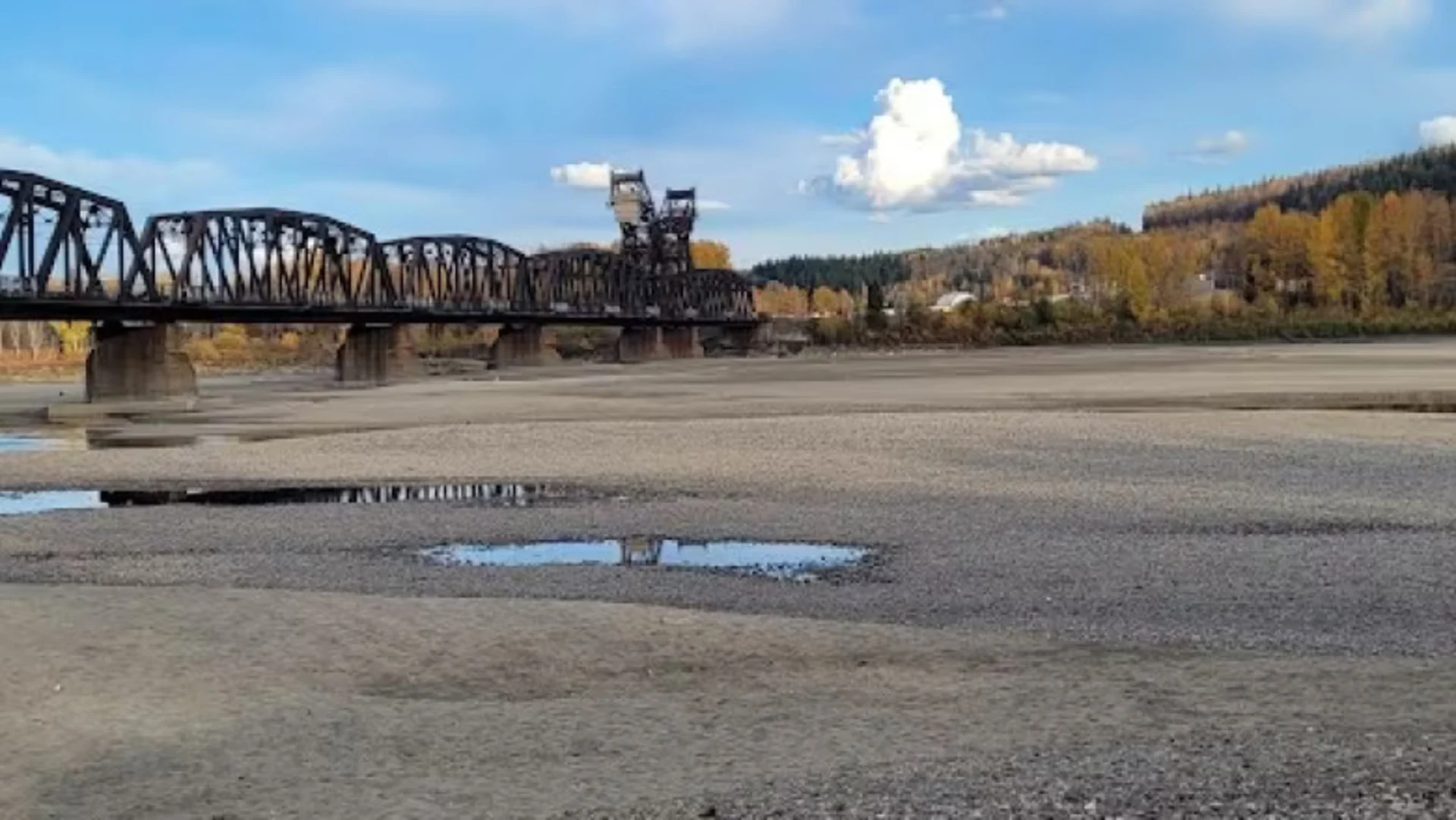
As drought dries up B.C. rivers, conservationists turn to beavers for help
The ongoing drought in many parts of B.C. is causing some rivers in the province's northern Interior to reach their driest mid-October levels in years.
In Prince George, the unusually low waters have locals worried.
Harriet Schoeter moved to the northern B.C. city 60 years ago, and loves walking the shore where the Fraser and Nechako rivers meet.
This week, the water was so low she could almost walk right across.
"I've never seen it this low," she said. "It was low before, but not like this."
Wayne Salewski, with the Nechako Environment and Water Stewardship Society, said the river is indeed at its driest for this time of year in decades.
"It's horridly low — unbelievably low," Salewski said, standing on the dry river bottom at the confluence of the two Prince George rivers. "Everything is going to pay the price for that.
"Our streams are dry right now … We need to hold water in place."
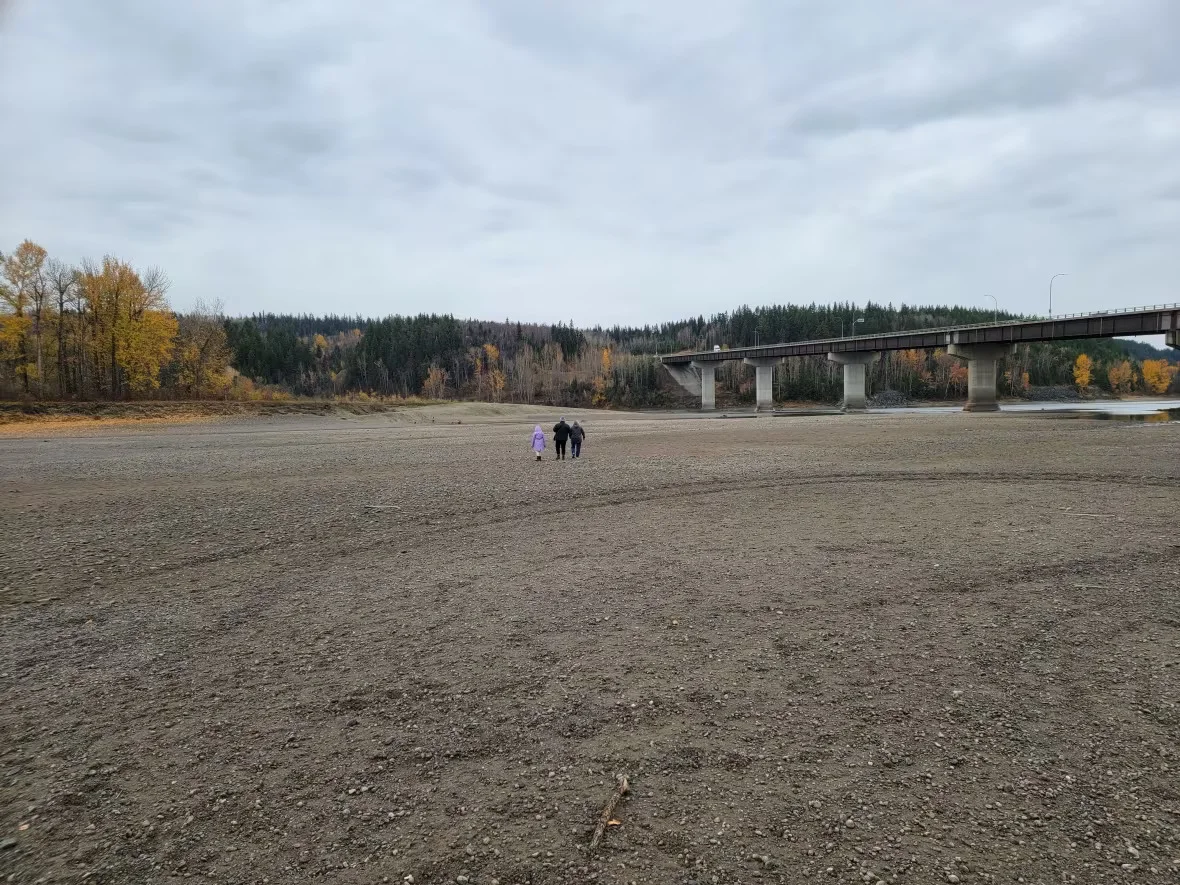
A family walks on the riverbed where water normally flows at the confluence of the Nechako and Fraser rivers near Prince George, B.C., on Wednesday. (Jason Peters/CBC)
RELATED: New tools to save Nova Scotia's hemlocks as species continues to decline
The shallower and warmer waters will harm salmon, sturgeon, and people whose livelihoods depend on healthy rivers, he said.
Now, Salewski's non-profit is looking for help to slow water loss in tributaries, from Canada's best-known builders: beavers.
'Nature's engineers'
According to data from Environment and Climate Change Canada, the Fraser River near Prince George is at its lowest for this week in 17 years, and nearly a third below the historical average for October.
The Nechako River, which flows into the Fraser from a reservoir to the city's west, is at its lowest for this time of year since records were kept.
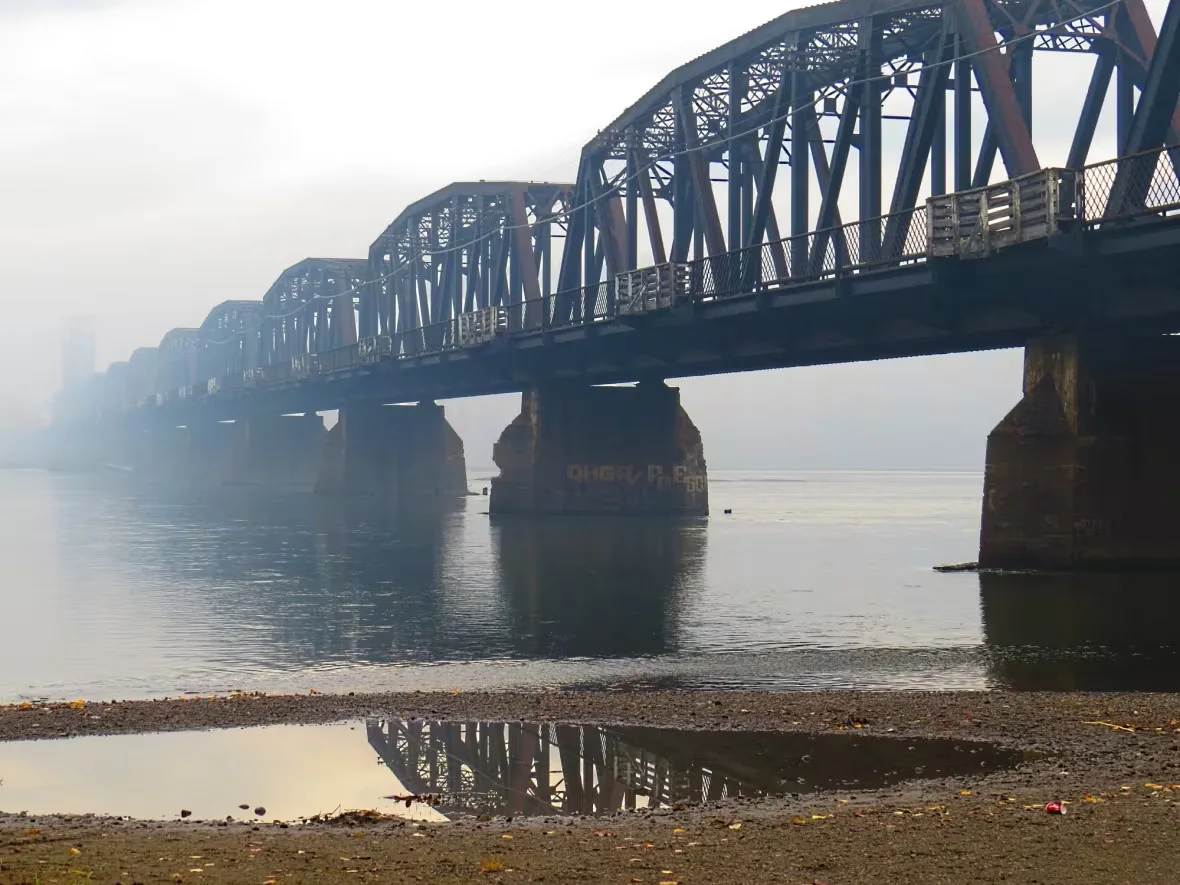
A Prince George, B.C., railway bridge at the confluence of the Nechako and Fraser rivers is seen in an October 2021 photograph. This October’s river levels are far below average for this time of year. (Submitted by Chuck Chin)
Salewski asked engineers at the University of Northern B.C. to help plan beaver dam analogues (BDAs), a promising fix that's common in Washington, Idaho and other U.S. states.
Sometimes also known as artificial logjams, the idea is to simulate the flat-tailed rodents' wood-and-mud dams to retain tributaries' moisture in small pools.
"Beavers are nature's engineers," said Mauricio Dziedzic, chair of UNBC engineering. "They tend to build dams that hold for quite a while."
He is helping Salewski's society with the technical aspects of beaver-style building. Thanks to their sharp teeth, he said, beavers cut wood to start a new dam, crisscrossing branches in a stream, adding mud, and then packing it tight with their flat tails.
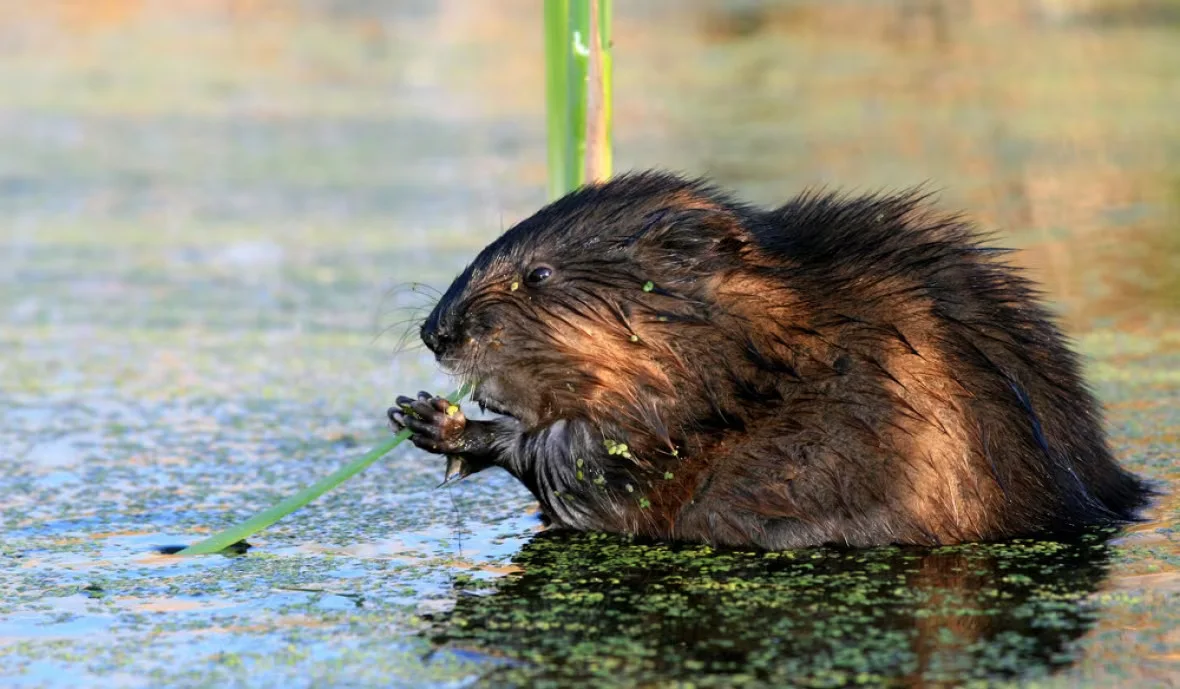
Beavers use their sharp teeth to cut wood to build dams — crisscrossing branches in a stream, adding mud, and then packing it tight with their flat tails. (David P. Lewis/Shutterstock)
SEE ALSO: Grizzly bears roaming in B.C. cities reflect 'kind of a weird year' for wildlife
"They use their tails to tap it and make it almost impervious," he said.
"A man-made structure made to look and function similarly — by keeping that water behind the dam — you recharge the groundwater [and] make the soil moisture increase."
'A more resilient kind of a waterway'
B.C. already has several such pilot projects. The B.C. Wildlife Federation (BCWF) and Nicola Valley Institute of Technology researchers installed nearly a dozen BDAs on a stream near Merritt, B.C., earlier this year.
The federation plans to build at least 100 more across the province's Interior and North, including in Nechako tributaries.
By driving vertical wood poles into the stream bed, and weaving them with debris such as logs, evergreen boughs and mud, their hope is beavers will take over their maintenance.
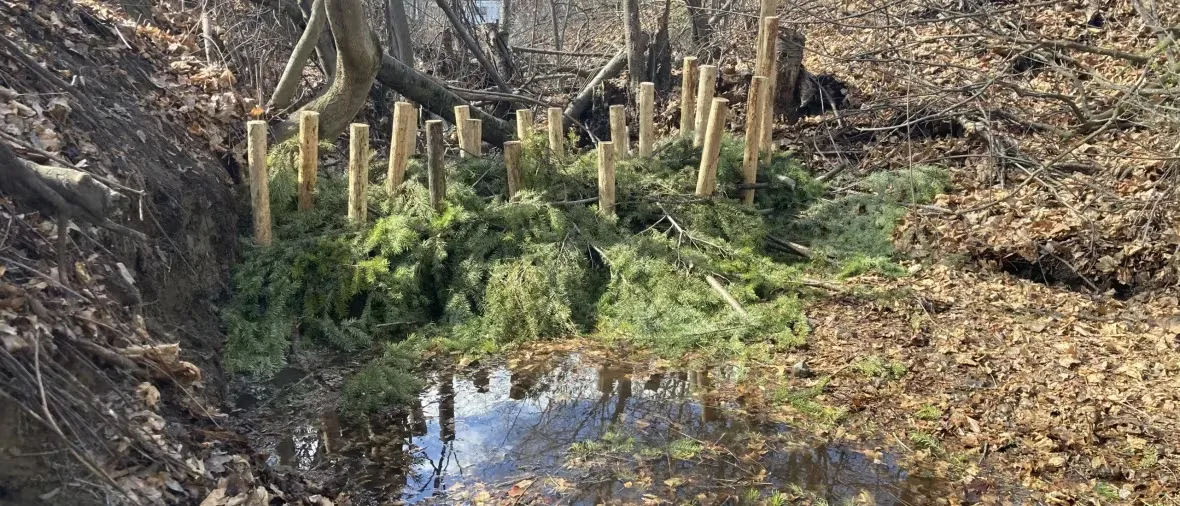
A beaver dam analogue is set up in Howard Creek, a tributary of the Nicola River, where 10 of the artificial logjams have been built as a pilot project that could soon expand across B.C. (Submitted by B.C. Wildlife Federation)
READ NOW: How clouds protect coral reefs, but will not be enough to save them from us
"It is basically a starter kit for a beaver," explained Neil Fletcher, BCTF's conservation stewardship director. "Can we encourage beavers to come back onto the land base and help hold that water?
"Beaver dam analogues can be part of post-fire recovery, as well as to respond to drought and climate change."
Last April, the Habitat Conservation Trust Foundation offered the BCWF $100,000 to try out the woven wood dams across B.C.

A map of B.C. shows the seven-day average streamflow on waterways across the province according to the River Forecast Centre on Friday. The darker-red dots represent the most drought-affected rivers, and paler dots represent the least drought-affected, compared to their usual water flow. (B.C. River Forecast Centre/National Geographic maps)
Fletcher said a key area for study is how BDAs impact fish. But he said U.S. evidence suggests salmon can often migrate past beaver dams, or take advantage of their pools.
Salewski said the artificial beaver dams' low costs have big appeal — especially if beavers themselves can take over their maintenance.
"Fundamentally, a beaver dam analogue is building the landscape for beavers to move in in 10 to 15 years," he told CBC News.
"This idea … is actually trying to work toward wetland corridors, to create this new mosaic and build a more resilient kind of a waterway here."
This article was originally published for CBC News.






